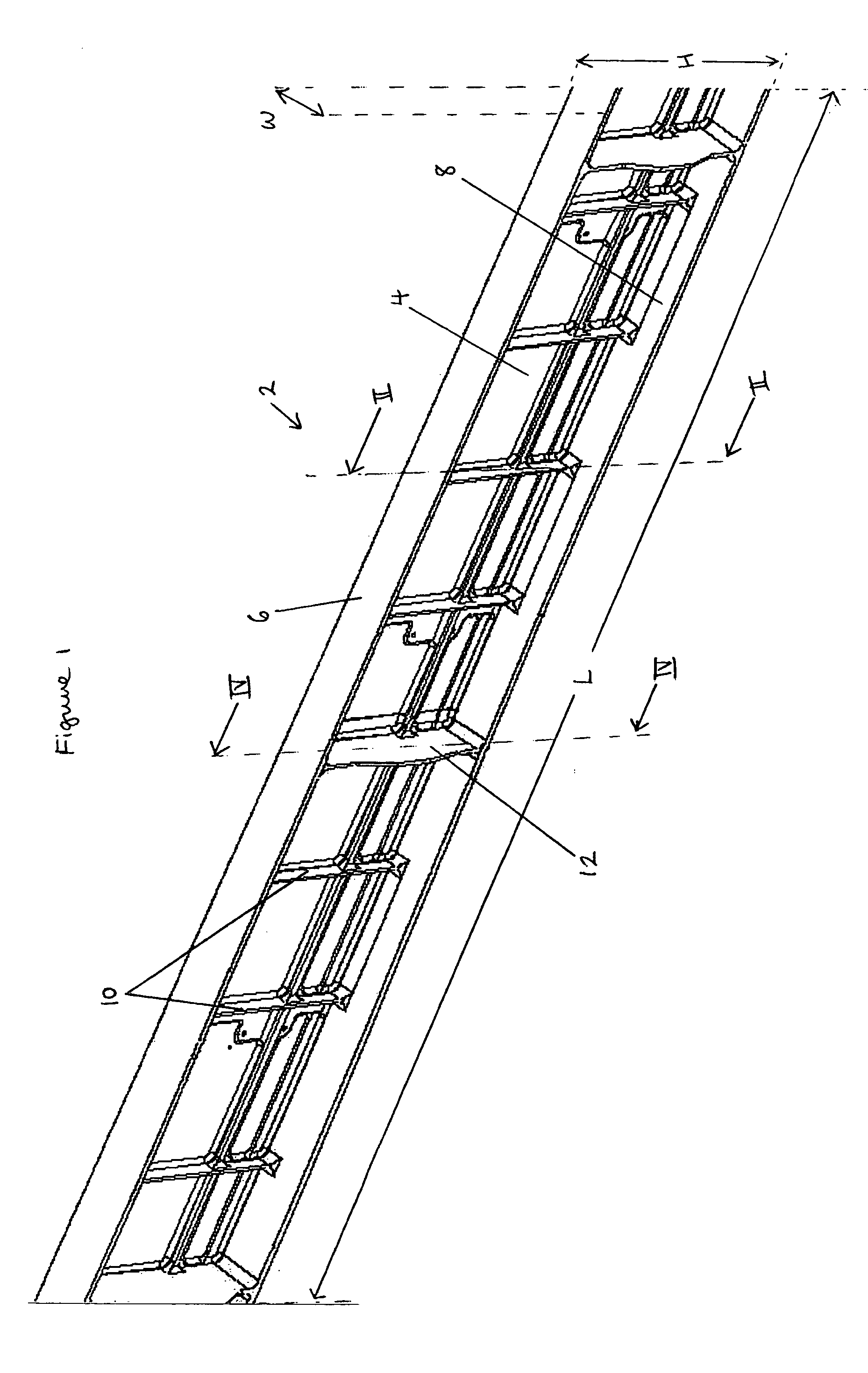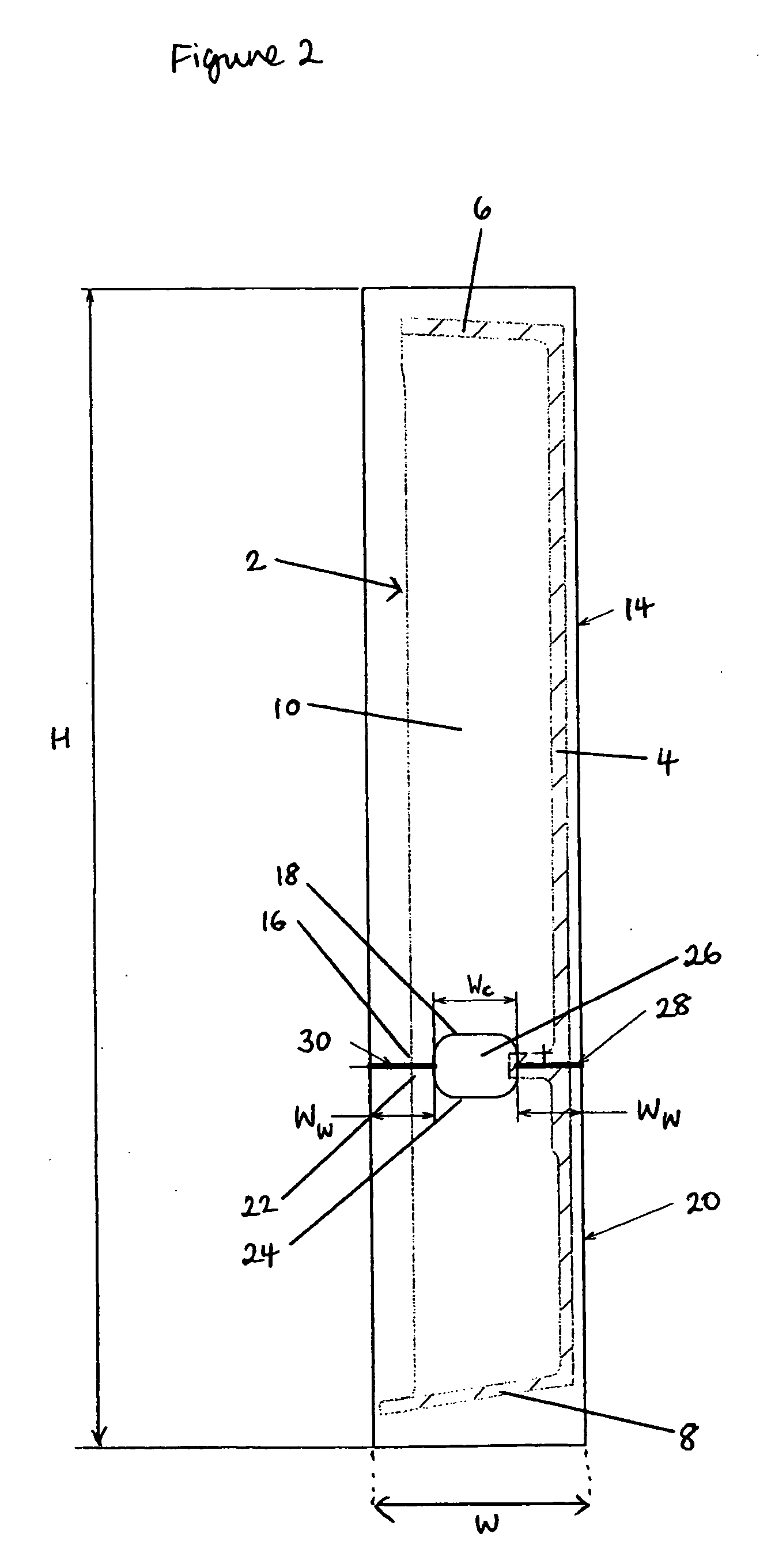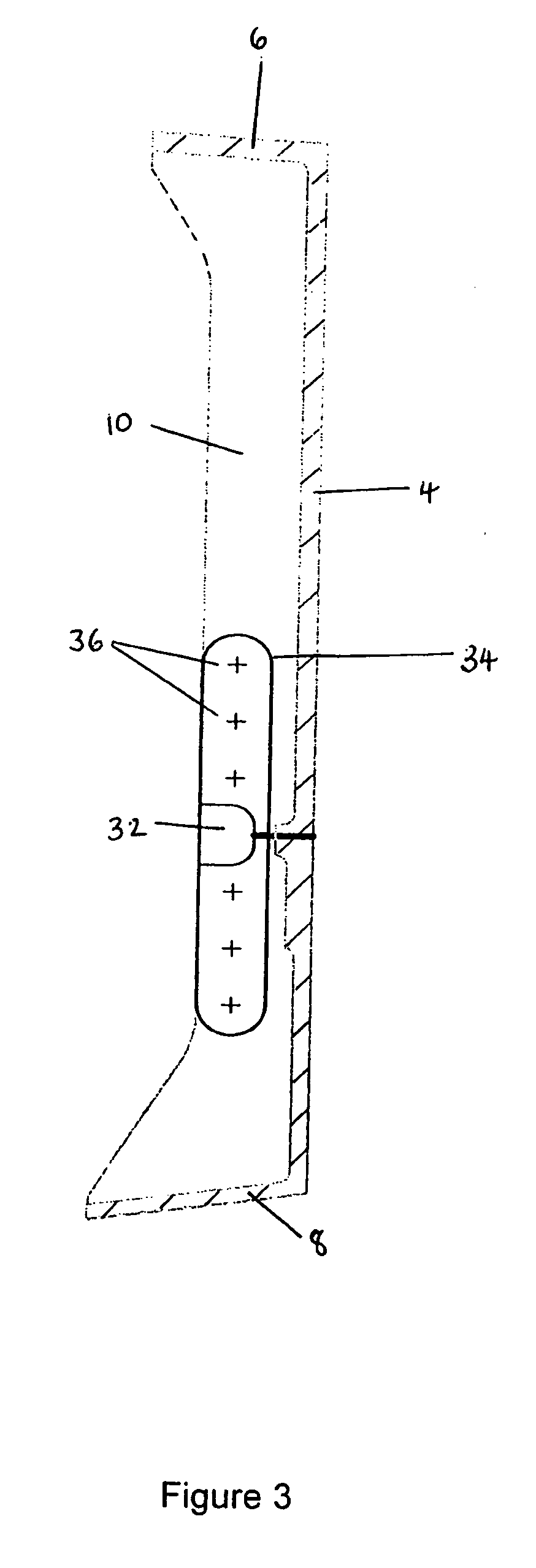Welding process for large structures
- Summary
- Abstract
- Description
- Claims
- Application Information
AI Technical Summary
Benefits of technology
Problems solved by technology
Method used
Image
Examples
Embodiment Construction
[0054]FIG. 1 is a perspective view of a section of spar 2. The spar section has a web 4 which is relatively narrow, an upper flange 6 and a lower flange 8. At regular intervals along the length L of the spar are stiffeners 10 for strengthening the spar. The stiffeners 10 are the same height H as the spar but extend further in the width direction W. Thus, the stiffeners appear as plates whose planes are perpendicular to the spar length. It will be seen that the height of the spar section decreases from one end of the spar section to the other. At intervals along the length of the spar, ribs (not shown) are attached to certain of the stiffeners 10 at locations 12.
[0055]FIG. 1 shows an integrally-machined spar section. The entire spar is formed from several separately-machined sections (like that in FIG. 1) which are then joined together (e.g. by rivets and bolts), since the size of each section is limited by the volume of material that can be rolled or extruded. The stiffeners 10 are...
PUM
| Property | Measurement | Unit |
|---|---|---|
| Structure | aaaaa | aaaaa |
| Length | aaaaa | aaaaa |
| Width | aaaaa | aaaaa |
Abstract
Description
Claims
Application Information
 Login to view more
Login to view more - R&D Engineer
- R&D Manager
- IP Professional
- Industry Leading Data Capabilities
- Powerful AI technology
- Patent DNA Extraction
Browse by: Latest US Patents, China's latest patents, Technical Efficacy Thesaurus, Application Domain, Technology Topic.
© 2024 PatSnap. All rights reserved.Legal|Privacy policy|Modern Slavery Act Transparency Statement|Sitemap



